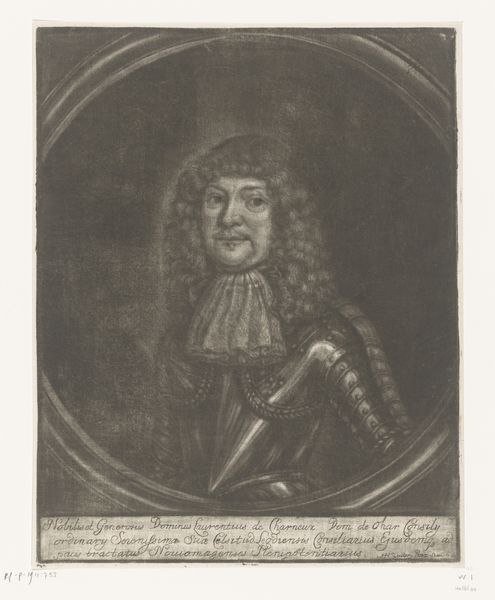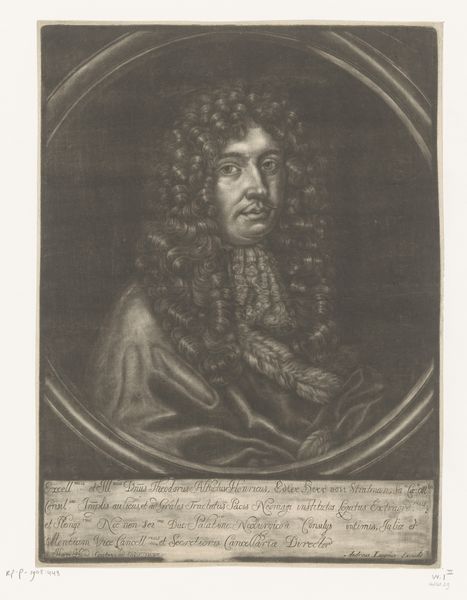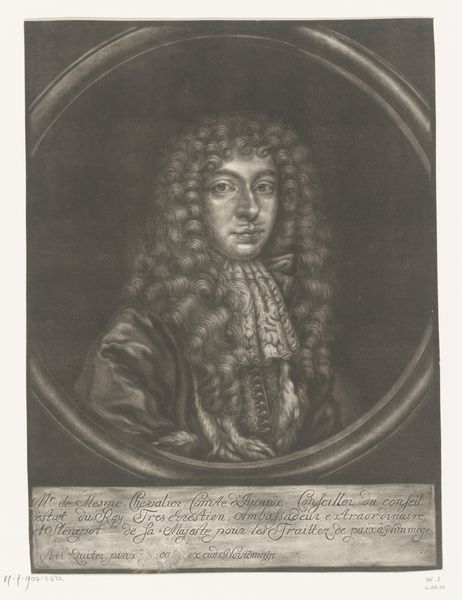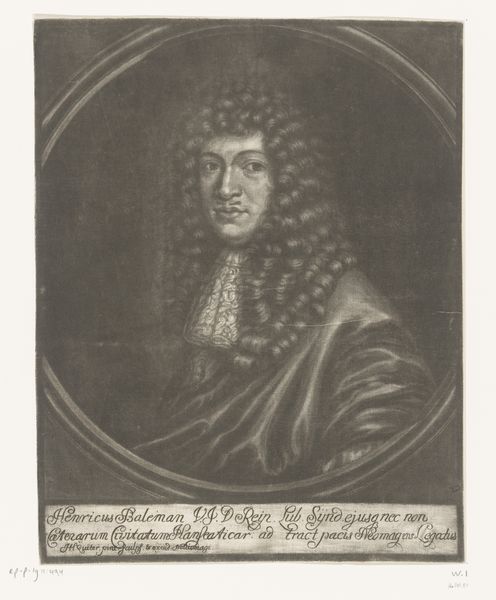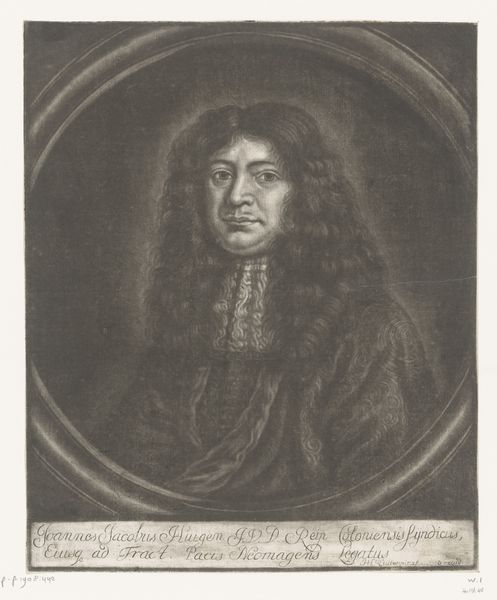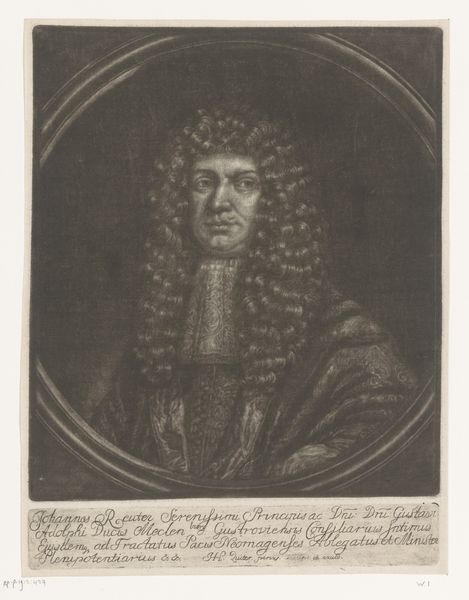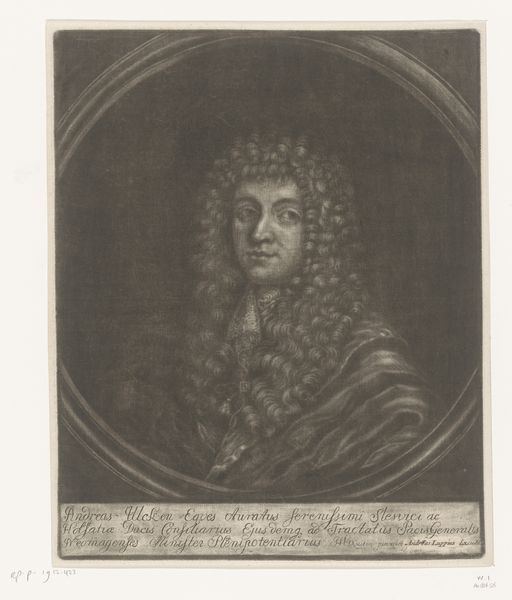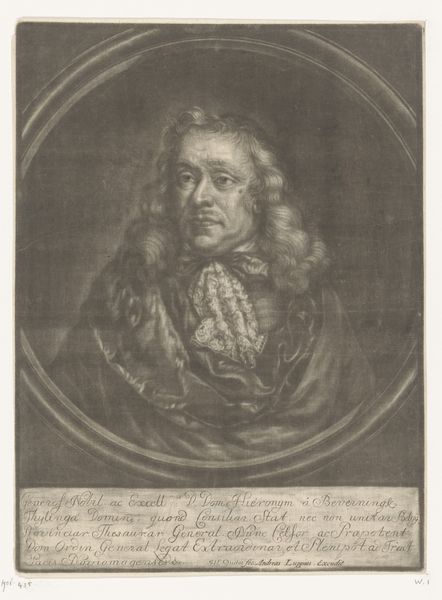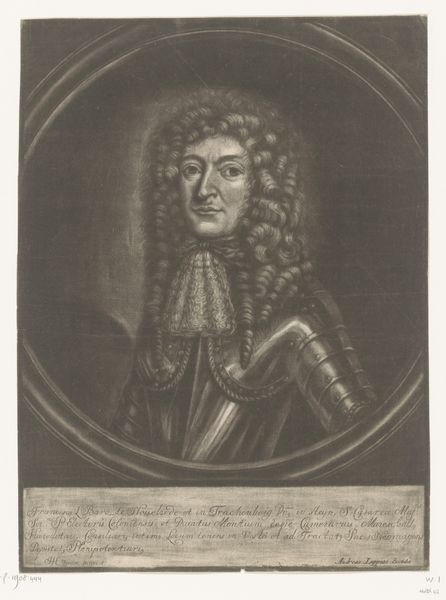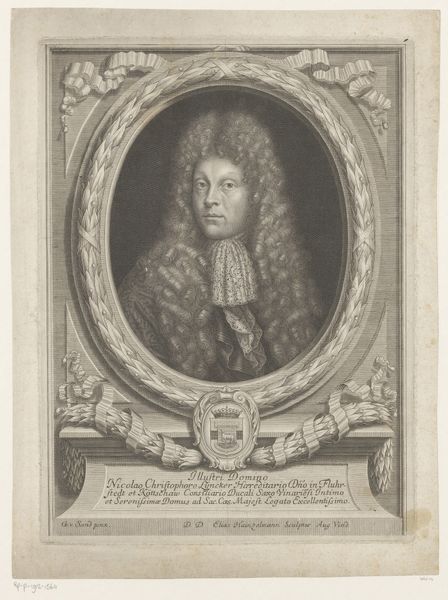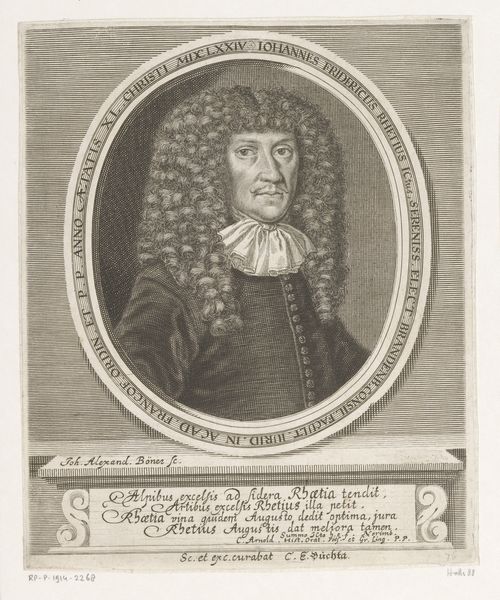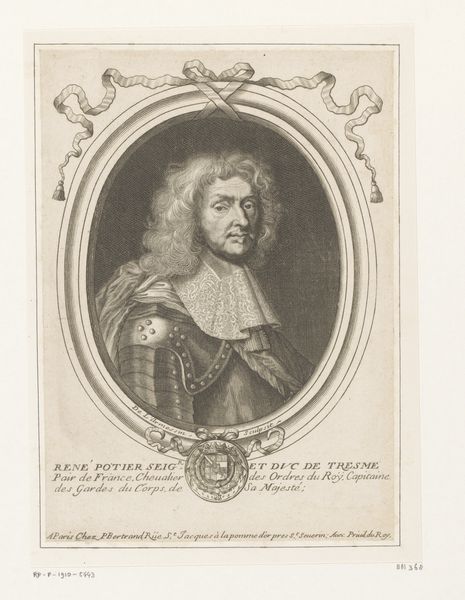
print, engraving
#
portrait
#
baroque
# print
#
figuration
#
line
#
history-painting
#
engraving
Dimensions: height 325 mm, width 253 mm, height 288 mm, width 252 mm, height 34 mm, width 245 mm
Copyright: Rijks Museum: Open Domain
Editor: We are looking at a print from 1679, "Portret van Orazio di Provana," by Herman Hendrik Quiter. It is an engraving. The detail in the hair and lace collar is incredible. It has an austere, almost severe mood. What stands out to you? Curator: The image, situated within a baroque oval, emphasizes status, linking Provana to power through visual rhetoric. Consider how prints circulated—replicating images made the elite visible across geographical space. Editor: Visible, but only in a certain way, right? This image feels so posed. Curator: Exactly. This image is part of a complex visual and political dance. The institutional forces like the Court demanded a level of control, influencing the production and distribution of such imagery. It became part of the public record, shaping how Provana, and by extension, the Savoy court, wished to be seen. How do you think the print medium influenced its reception, compared to a painted portrait, for instance? Editor: I guess because they were easier to distribute, they presented an idealised and more widespread message? Making portraiture accessible. Curator: Precisely. The print, reproducible and thus shareable, functioned almost like early public relations. It’s less about inherent artistic genius than about controlled dissemination of power and prestige, contributing to the subject’s legacy. Editor: That is fascinating, I will never see these prints in the same way now. Curator: Considering the public function of art transforms our understanding of historical imagery and allows a better comprehension of socio-political conditions, doesn't it?
Comments
No comments
Be the first to comment and join the conversation on the ultimate creative platform.
